- home
- Recommendations
- Rediscover the charm of Kita-Senju! Kita-Senju Women - SENJO - Art stroll
Rediscover the charm of Kita-Senju! Kita-Senju Women - SENJO - Art stroll
 2018年9月25日
2018年9月25日 December 22, 2021
December 22, 2021
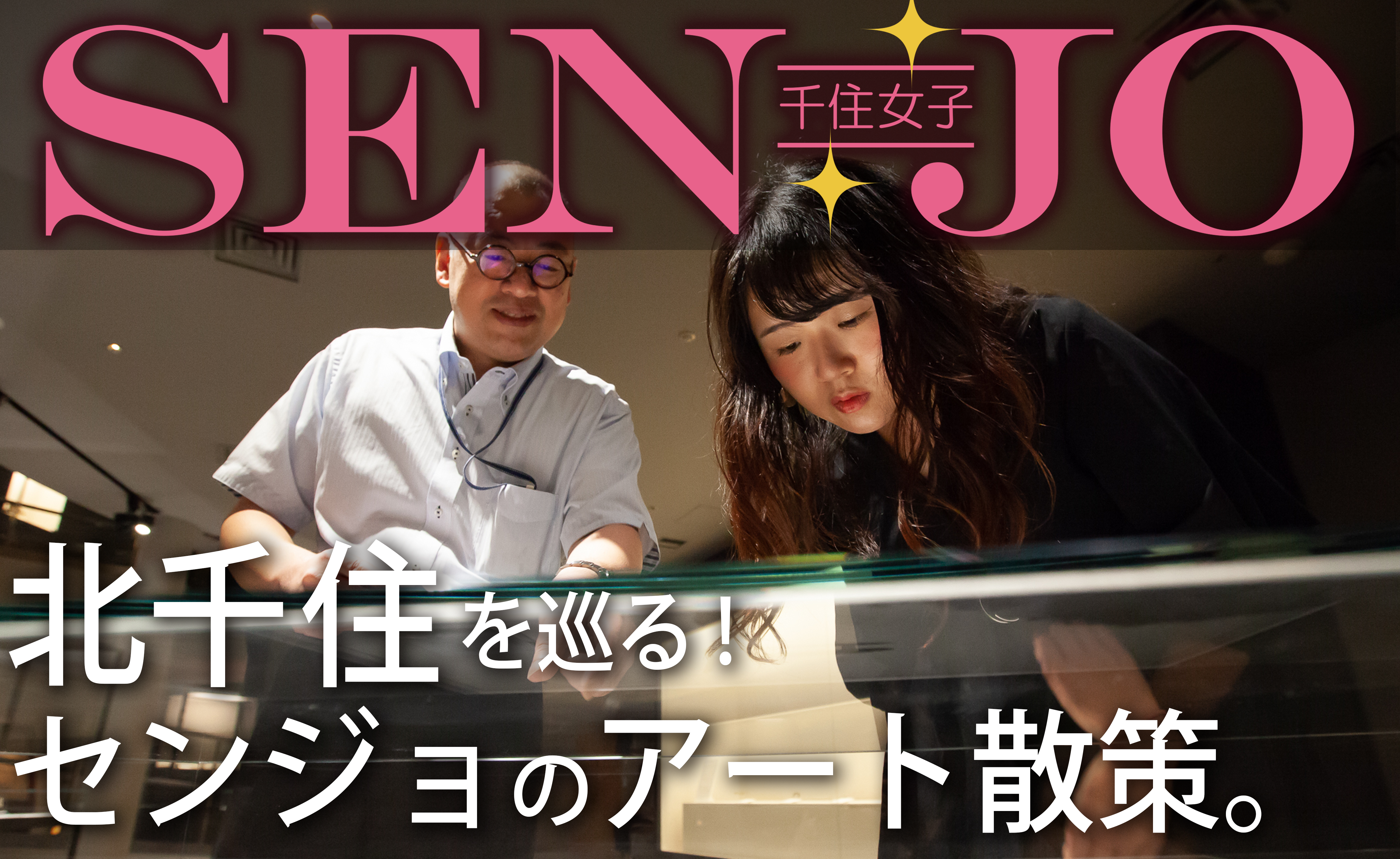
Nowadays, Kita-Senju has often been featured in magazines and media.
Have you heard "SENJO"と呼ばれる女性たちの”新しいブーム”が起きていることはご存じでしょうか。
"SENJO"means"Kita-Senju Women = commonly called Senjo"..
It is about the women who rediscover the new charm of Kita-Senju and enjoy Kita-Senju life to the full.
"SENJO" who push their way to the latest lifestyle.
This time, the theme is "Art spots of Kita-Senju, enjoyed by SENJO".
We will introduce three art spots where you can feel the enjoyment of expression closely in the city where you feel full of autumn.
This time SENJO who walks around Senju is...
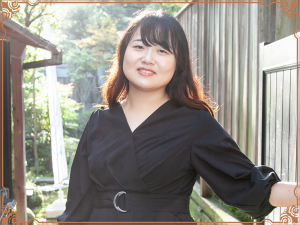 PROFILE: Ms. Kaori Tamegai
PROFILE: Ms. Kaori Tamegai
SENJO who experiences art this time is Ms. Kaori Tamegai from Yokohama city, Kanagawa prefecture, and currently living in Adachi City.
After going through advertising sales in the food and beverage industry, he is currently in charge of PR of Ippo-Ippo corp. that operates 8 shops in Kita-Senju and 2 shops in Okinawa.
It is a woman in her twenties who sends not only the store but also the attraction of Kitasenju.
The public bathhouse and the bowling alley as ruins are as good as a small theater and a gallery cafe
Ms. Tamegai first visited Kita-Senju BUoY.
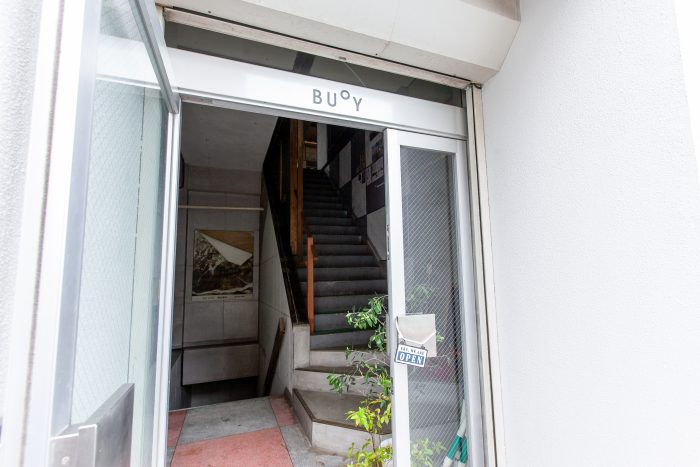
This facility which opened last summer, somehow is a public bath & bowling alley. It has been untouched for about 20 years, and it seems to be like ruins before opening.
These two floors that rebuilt the underground bathhouse space into small theaters, the bowling alley space into cafes and galleries, studios, rehearsals, now are the art spaces where people inside and outside the city gather.
Ms. Yoshiko Kishimoto who is art director of BUoY showed me around.
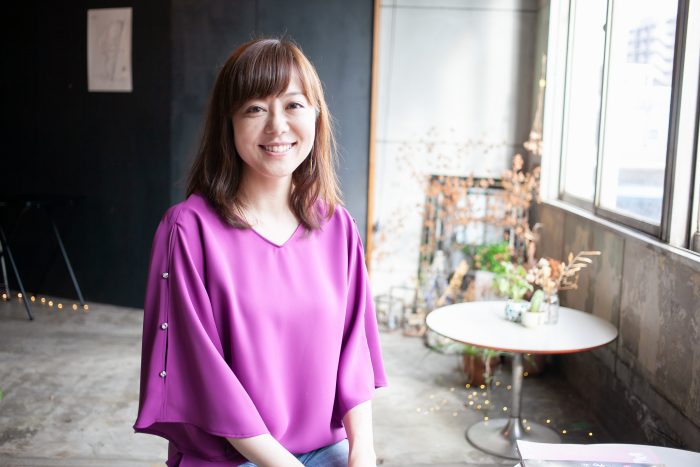
"We opened BUoY because the current BUOY member who moved into this building casually found out the space that was untouched on the other floor.I also got into my ear through people, It was my heart that I wanted to get to know a space like a miracle. "
Mr. Kishimoto who is speaking is a director, and when he was a graduate student at the University of Tokyo, he was engaged in research and practice to deliver different scenes of the country and culture sphere to the audience including not only languages but also directing and creating space. Owner.
Because I touched the art of each country, I always felt little of the environment where artists could use small theaters and galleries at a low price in Japan.
Cultivating collaborators such as actors, architects, dancers, lawyers and others, raising funds through cloud funding and also handling cultural facilities related to art, etc. Tokyo National University of Fine Arts Music College Music Faculty Music Environment Creation Department, Yoshio Ichimura Boosted by Yoshio Ichimura There was also, we reached the realization of BUoY.
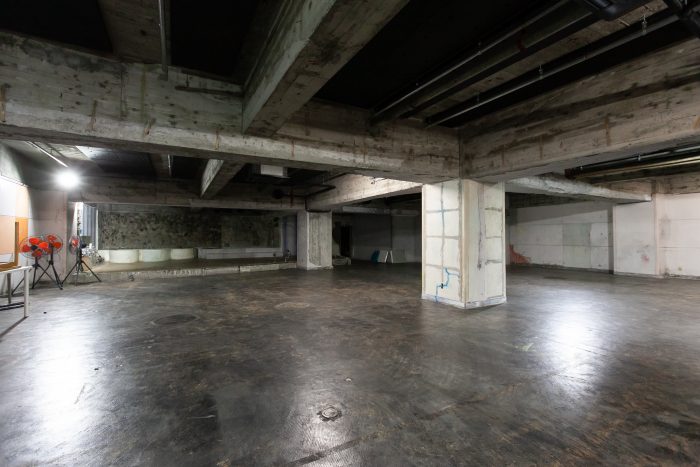
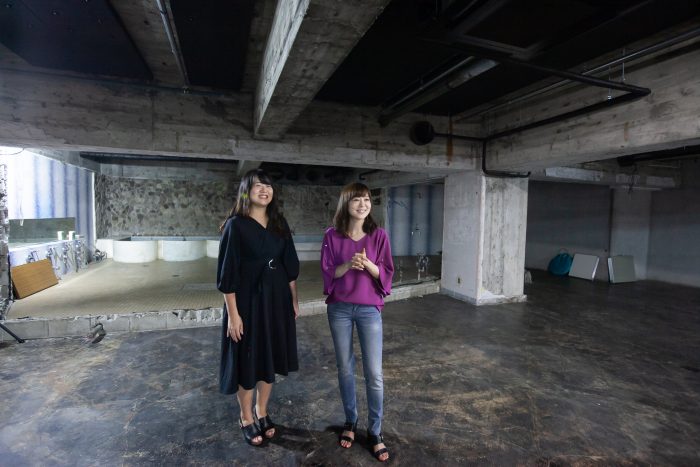
When she stepped into the basement, Ms. Tamegai was surprised.
This small theater has a bathtub of a public bath and a part of a washing place on the stage.
"We want you to touch art in a place familiar to us, so we consciously left memories of the former town. we want to lower the threshold of the place to touch art."
Mr. Kishimoto said so and guided me to the second floor, there were a cafe where people in the area stop by, a gallery connected to the cafe space, and an atelier of the artists.
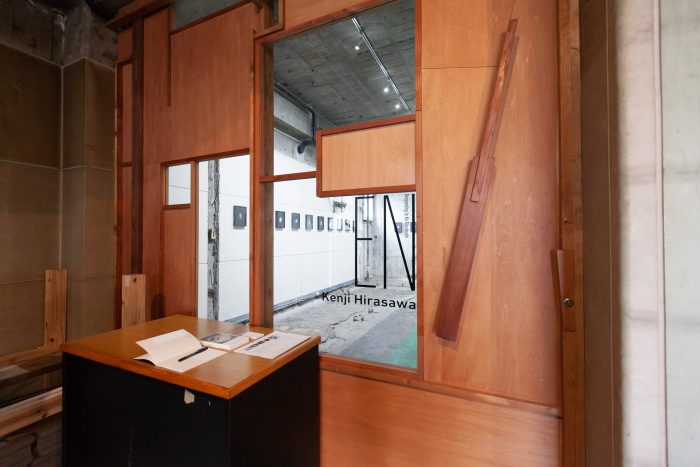
"By focusing on the open space of a cafe, I wonder if people can easily stop by here and feel art works."
The works by a photographer, Kenji Hirasawa were displayed on the day I was guided. He photographed a figure of a dancer with a thermography camera. In addition, I saw Mr. Hirasawa working at the atelier next door.
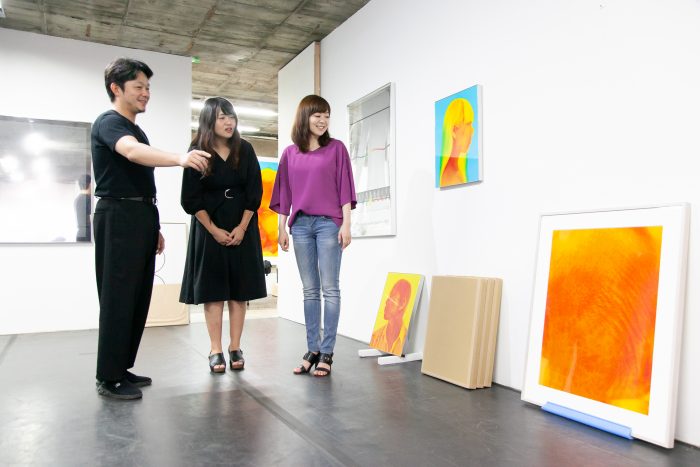
"Actually, it seems that Greek dancer Fannie Sage, who also became a model of Hirasawa's work earlier, went to the Japanese-style sweet shop called "Fukujudo" in the Million Street shopping district before the performance. On the day of the performance, she invited the couple of the shop, and we were able to become a point of contact with those who never touched those expressions.
The couple have not had the option of going to see art so far, but in fact they were seeking a meeting potentially. I thought it was good to make BUoY in Senju."
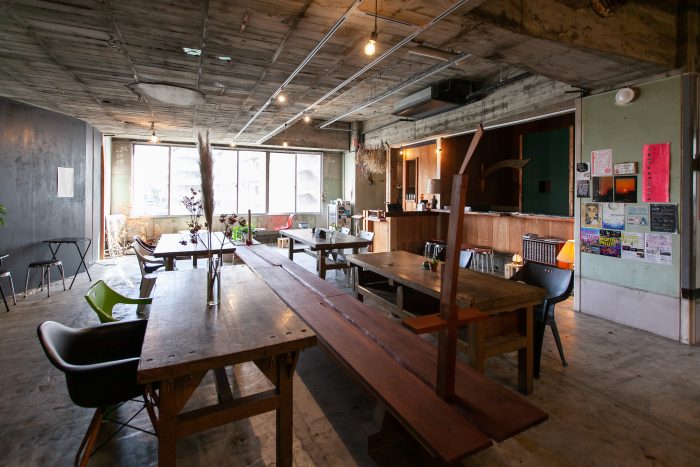
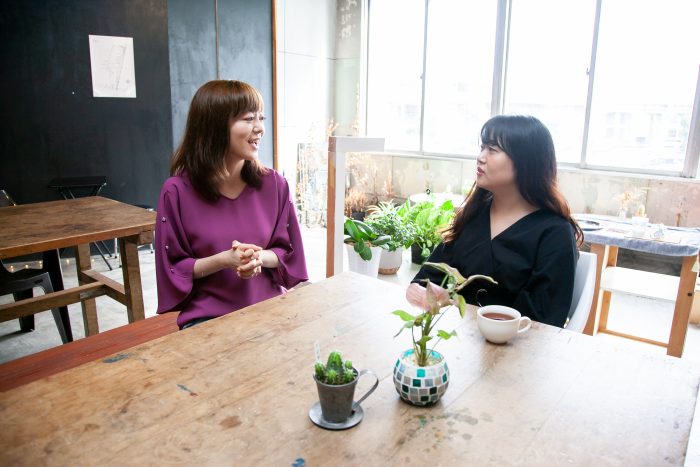
Every Monday from 4 pm to 7 pm, the children cafeteria is opened by the owner of this building, and "BUoY" deeply relates to the area.
It was a nice landmark for this town, this art space, which means buoyant floating in the sea.
Address: 49-11 Senju-Nakacho, Adachi
Contact: info@buoy.or.jp
※ Cafe is open on Wednesday ~ Sunday, noon ~ 7 pm (Closed: Monday, Tuesday, End of year, New Year, Summer holiday)
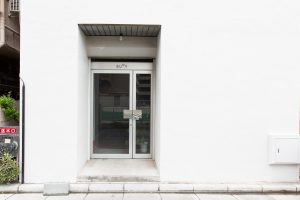
I feel art as a scene at a Japanese house that has kept watching Senju's city
Next, I came to the Japanese house "Nakacho House", which is less than 5 minutes on foot from BUoY.
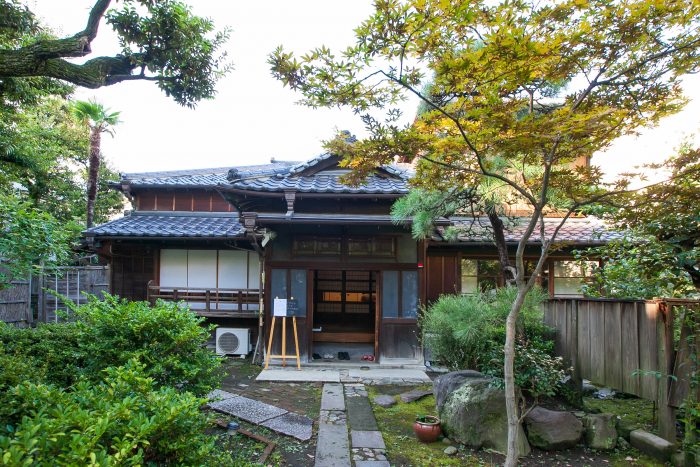
This Japanese house built before the war is now operated by a member of the "citizen participatory art project" named "Art Access Achimichi Sound Machi Senju no Edo" (commonly known as "sound town").
The activity of the sound of the city that aimed to create new communication (arts) through Art through Adachi Ward was launched in 2011.
They have held many events inviting Mr. Yoshihide Otomo, musician, and contemporary artist Mr. Shinji Omaki who was a teacher at Tokyo University of the Arts.
Among them, "Memorial Rebirth Senju" (commonly known as "memoriba"), which transforms the familiar scenery into a light landscape with countless bubbles, has continued activities to color the townscape symbolically as an art for 8 years, such as being featured in one scene by NHK's regional drama.
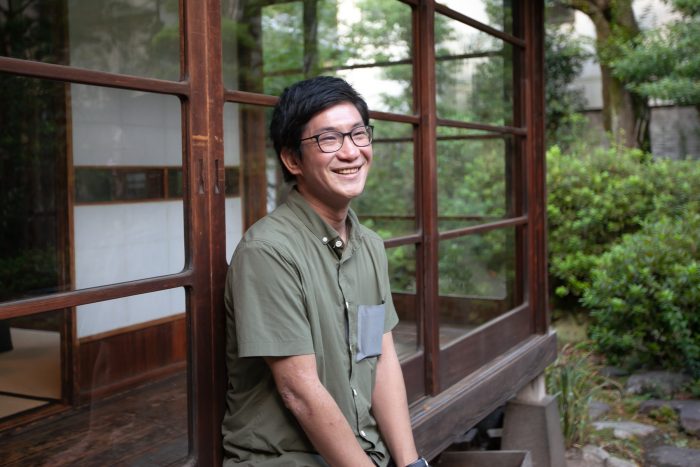
Mr. Takeshi Yoshida who is a director of Otomachi office showed me around the building.
"Actually, this is the place where I got to know through the activity of Otomachi two years ago. In 2016, I exhibited the work called "Kuroi house" as a new attempt by Mr. Shinji Omaki who is working on Memoriba. It expressed the sway of the shadow of time by using a wooden two-storied vacant house aged over 50 years in Senju-Nakacho. But the management company of this Kuroi house has managed Nakacho house too, so I was asked for advice about the effective use of the house."
Minimal repairs are done to this house, and Otomachi held video exhibitions, photo exhibitions, talks and workshops one after the other from the fall of 2016.
As artist Mariko Tomimasa made a movie production while staying here, he continued activities to connect the town and art.
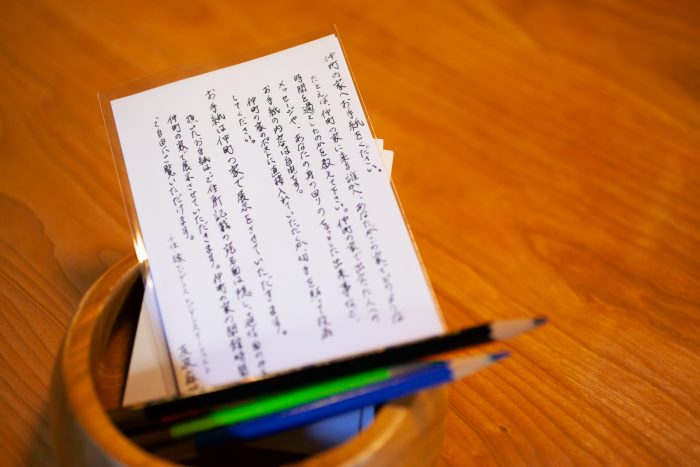
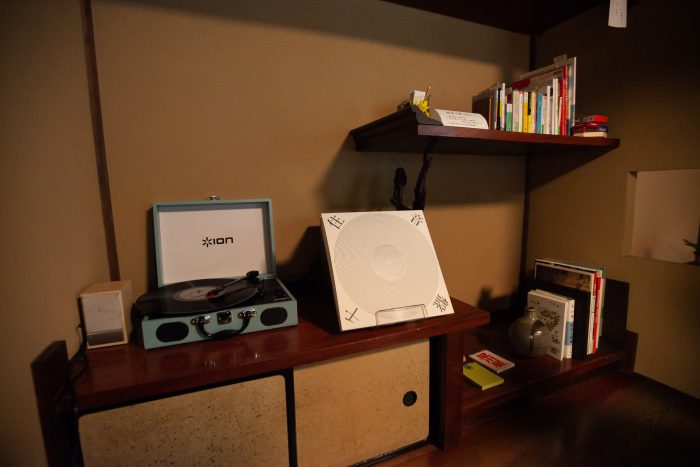
"Is it possible to enter even if the project is not on display?" said Ms. Tamegai. Mr. Yoshida told her
"Since it has been the activity base of Otomachi project so far, it has not been open except for the exhibition period, but since 2017 it has also be utilized as a space for exhibitions and presentations related to artists and students. We have increased opportunities to open it gradually.
And from this year, with the cooperation of many people, I can open this place on the 3rd of the week. "
From the end of June, Nakacho House as a "cultural salon" will open to anyone who can stop by from 10 am to 5 pm on Saturdays through Mondays and holidays.
"I think that it would be a pleasure for everyone who visited to have the opportunity to meet with people who do not usually meet here and that some kind of activities will be born in the future.
We believe that it is the "Nakacho House" here that can represent everyday life as a scene in art.
Please feel free to come and drink tea with ease and enjoy various unexpected encounters with art and people. "
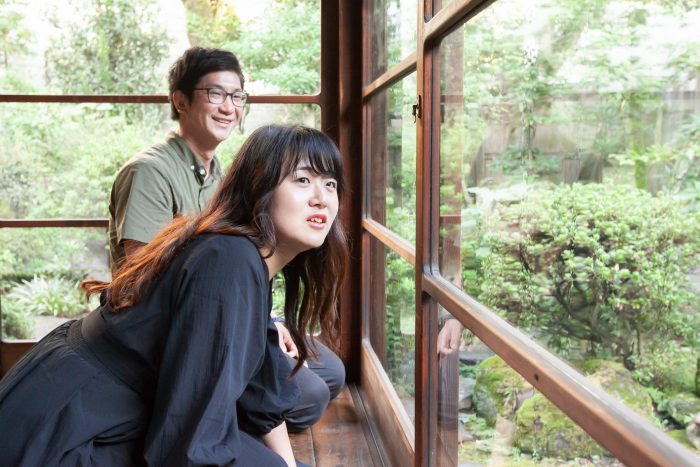
"Nakacho House" will make its grand opening on September 29 and will have a new departure as a town's cultural salon.
By adding contemporary art to the town scenery we want to keep, a new and impersonal space was born.
Address: 29-1 Senju-Nakacho Adachi
TEL: 03-6806-1740 (1pm - 6pm, excluding Tuesday and Thursday)
Opening hours: Saturdays, Sundays and public holidays 10 am - 5 pm
※ Open every day from October 1 (Mon) to 15 (Mon). Open from 9am during the period from October 4 (Wed) to 11 (Thu)
* During the opening period from September 29 (Sat) to March 4 (Sun) 2019, Ryo Minakami / Mikihiro Endo "Under Her Skin" (video: sound installation) can be watched
Official HP:http://aaa-senju.com/
Cost: Free admission
※ For the latest information,Nakacho House Facebook PagePlease check before visiting.
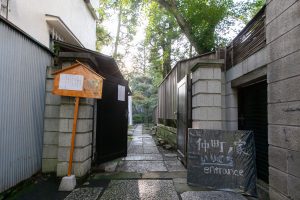
Numerous world-famous items to enjoy at Senju's only art museum
Lastly I headed to the "Sinclosed Art Museum" in Senjubashi-do Town.
Senju Metal Industry Co., Ltd., founded in 1938, deals with solders used for semiconductors, smartphones, cars, etc. It is the only art museum in Senju situated in the building connected to this head office building.
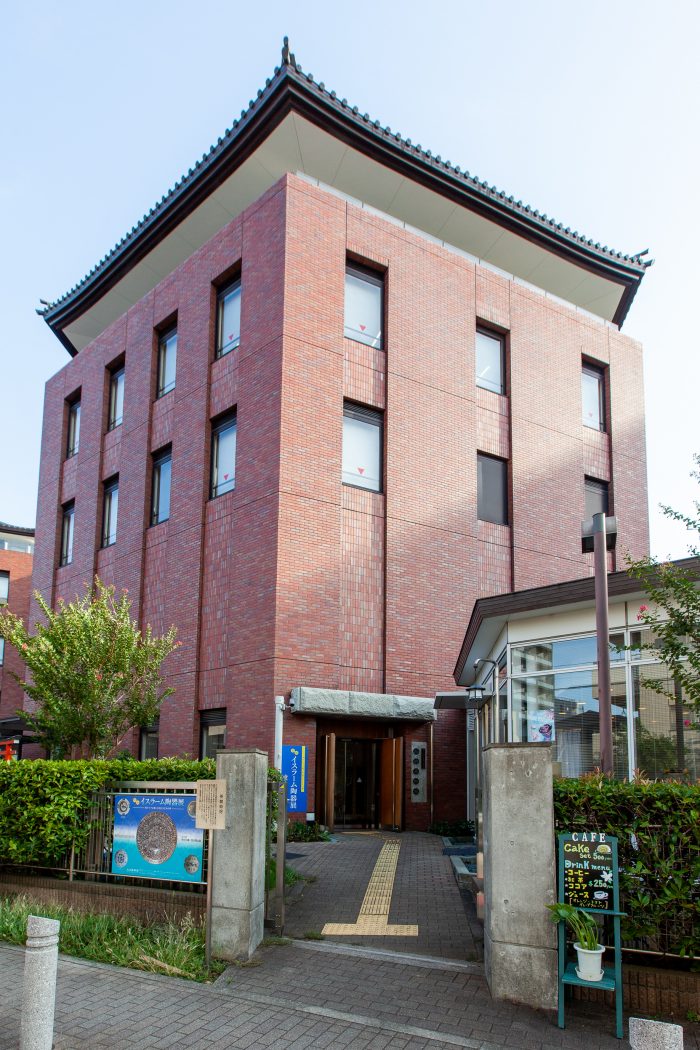
Mr. Katsuhiko Hayashi, a curator of Sekido Museum of Art showed me around. He is in charge of various tasks such as study and research, including commentary on exhibits from the beginning of this opening.
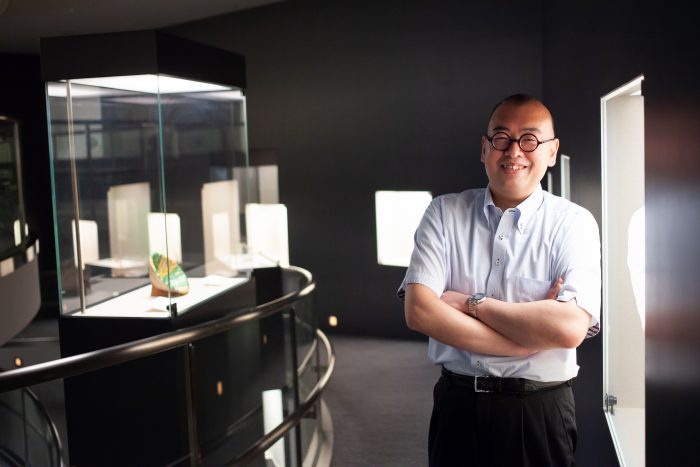
"This museum was established by the Satoh Artcraft research & scholarship foundation in 2006. It houses mainly a collection that Mr. Senju Sato who founded Senju Metal Industry has collected for nearly 70 years. There are a variety of earthenware, ceramics, Buddha statue, bronze ware, stone craftwork, etc. Also, the idea of the building was given by Sato, and the museum is named after his pen name "Sekido".
Inside, a replica of Senju related prints welcomed us, including Katsushika Hokusai "Thirty-six Views of Mt. Fuji, Bushu Senju" and Utagawa Hiroshige "One hundred Scenic Spots of Edo, Senju no Ohashi".
The exhibition space on the first floor and the second floor is connected by a curved slope and the design that goes up while watching the exhibits aligned with the glass case on the wall is due to the Irie Miyake Design Office known for Omotesando Hills and others.
While Mr. Ogai walks on its characteristic slope, when I tell him, "I certainly remember Omotesando Hills,
"But this slope, Omotesando Hills seems to have a better place at our museum (lol)," Hayashi said with a smile.
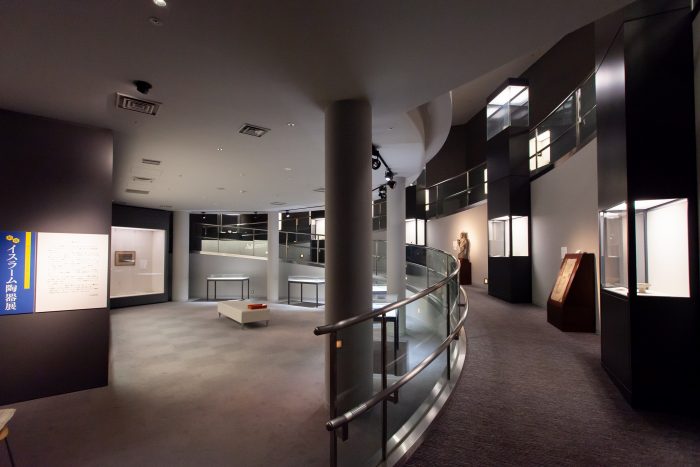
"Islam pottery exhibition" is currently being held.
"Islamic pottery is a generic name for glazed pottery baked in the Islamic area centered on West Asia, Central Asia, North Africa since the 7th century.
In this exhibition, you will be able to see Western Asian craft works before the birth of Islamic ceramics, centered on about 40 Islamic ceramics from the 9th to the 10th century to the 17th century.
All exhibits belong to the museum, including ceramics of other countries that are said to have been influenced by Islamic ceramics. Please go inside first. "
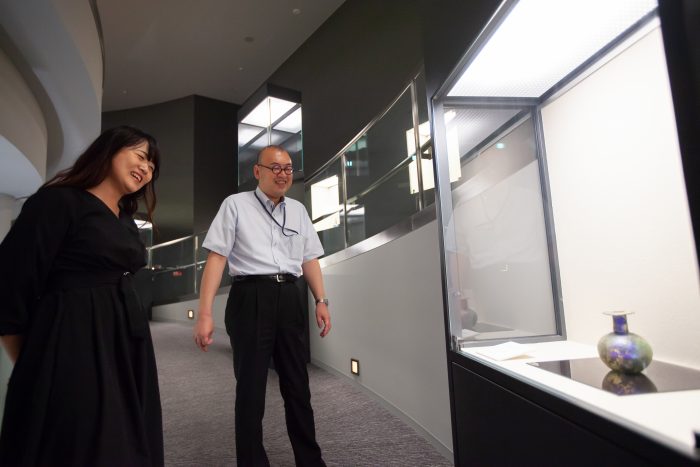
"In one of the Islamic ceramics of the 9th century to the 14th century, in order to imitate gold and silverware, the bright pigment like a metal which was mixed silver oxide and copper oxide on the white glazes using tin and lead, had been used.
It is said that "Painting with rasters" was painted with this pigment, it can be said to be one of the pottery symbolizing Islamic ceramics.
Although it is not known unexpectedly, Islamic ceramics can see techniques and methods comparable to Chinese ceramics.
For example, an example of coloring indigo with pottery has been discovered earlier in Islam. "
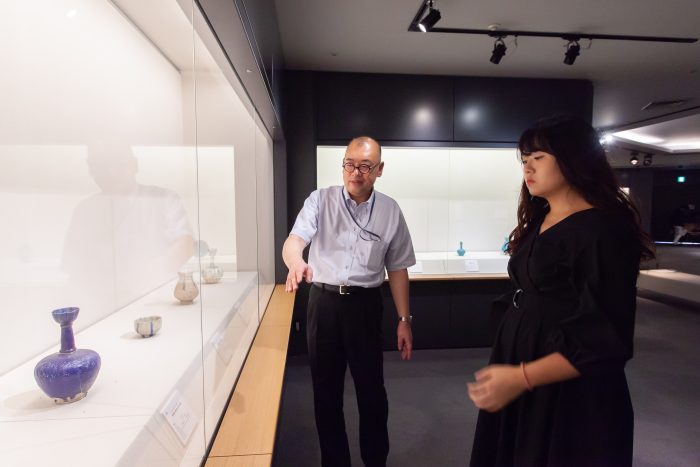
"If you serve sashimi in this container, it looks delicious"
As expected, there is only a publicity of a company that operates a restaurant, and Mr. Ogai seems to have a dish of dishes coming in while watching instruments.
"It can not be seen much among Chinese and Japanese dishes, but in Europe, there are some dishes with holes for string and people enjoy hanging it on the wall.
Looking with the eyes that you enjoy as a work of art as a work of art, you may be able to see a different way. "
"Please tell me about Mr. Hayashi's side by side"
"Sphinx is drawn vividly in the center, it is a rakabi hand dish considered to have been made in Syria of the 12th century.
The warm-hearted line is concrete and easy to understand. I think there are less than 10 left in Japan. "
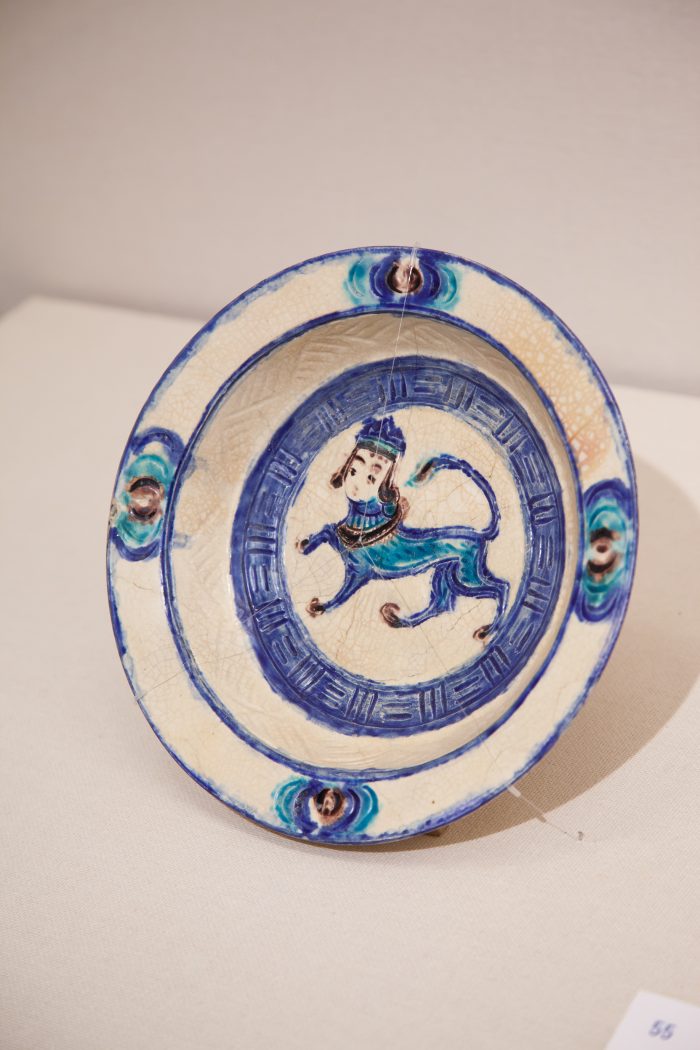
Certainly Sphinx of adorable facial expression. To encounter valuable gems worldwide, Mr. Okai was also surprised.
After having gone around the hall with specially Mr.'s explanation, go to the coffee shop "Myoko" next to the museum.
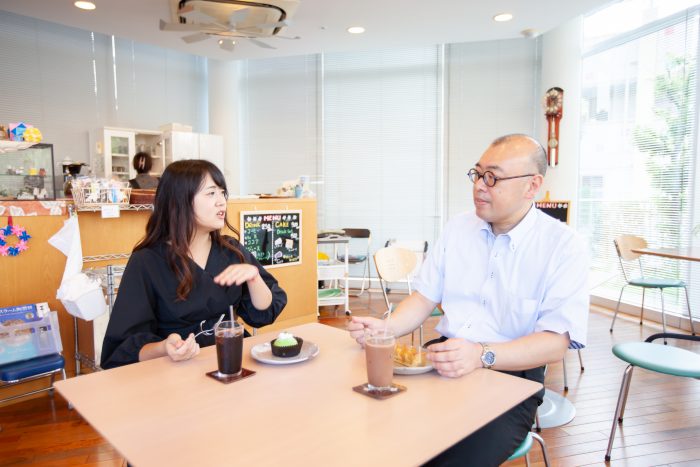
"I learned today that I was shy about managers who were deeply involved in Senju were collecting such art items.
In the exhibition, there were valuable and beautiful dishes, so I've learned a lot from them because I work for a company serving foods." Seemingly she was satisfied.
"Islamic ceramics exhibition" will be held until December 16 (Sun). It seems that the plan of the exhibition will change every four months, so you would like to visit every season.
Address: 23 Senju-Hashidocho, Adachi
TEL: 03-3888-7520
Opening hours: 10 am - 5 pm (Admission is until 4:30 pm)
Closed: Mondays (next Tuesday if it is a national holiday) * There is a period of non-scheduled holiday such as summer, year-end and new year
Admission: General ¥ 500, Student ¥ 300 ※ For those who are under elementary school students (must be accompanied by an adult), those 65 years or older, those with disabled person's notebook are free. People who are not general public must present their ID at a reception.
【Tea House "Myoko"】
TEL: 03-3888-9882
Business hours: Monday through Friday, 10 am - 4:30 pm
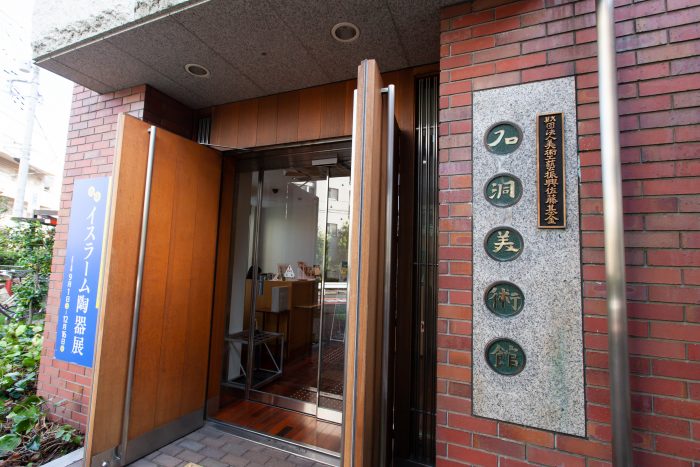
In conclusion
"Living in Senju for a year and I've been working for four years, but there were many things that I didn't know.
It is impressive that any art space was somewhere at home.
It is easy to go anywhere that encounters with people are being cherished. If you are in such a place you can feel comfortable with dates,
It seems like I can enjoy Senju in the daytime as well. "
And Mr. Muiai.
Please visit the art spot where you can enjoy serenity of Senju on walking in autumn.
This article written by ... Ms. Akiko Yoshimitsu
Editor of "Senju publishing" which is located in 3-chome Senju near her house, and owner of a book cafe in six-mat room.
Living in Senju-Okawacho, mother of one child. In 2015, Senju Publishing Co., Ltd. was established in 3-chome Senju.
She runs a book cafe, "SENJU PLACE" with a low table in six-mat Japanese room in the corner of the office.
She has also produced a lot of events in town such as "Senju Paper's Festival" and "Senju School", and now she is a member of Adachi City Culture, Reading and Sports Comprehensive Promotion Committee.
"Adachi no Ohacho" (Adachi City Tourism and Exchange Association) "Adachi-no-Monozukuri Story" (Adachi City Industry Federation) for editing cooperation.
Recommended articles











